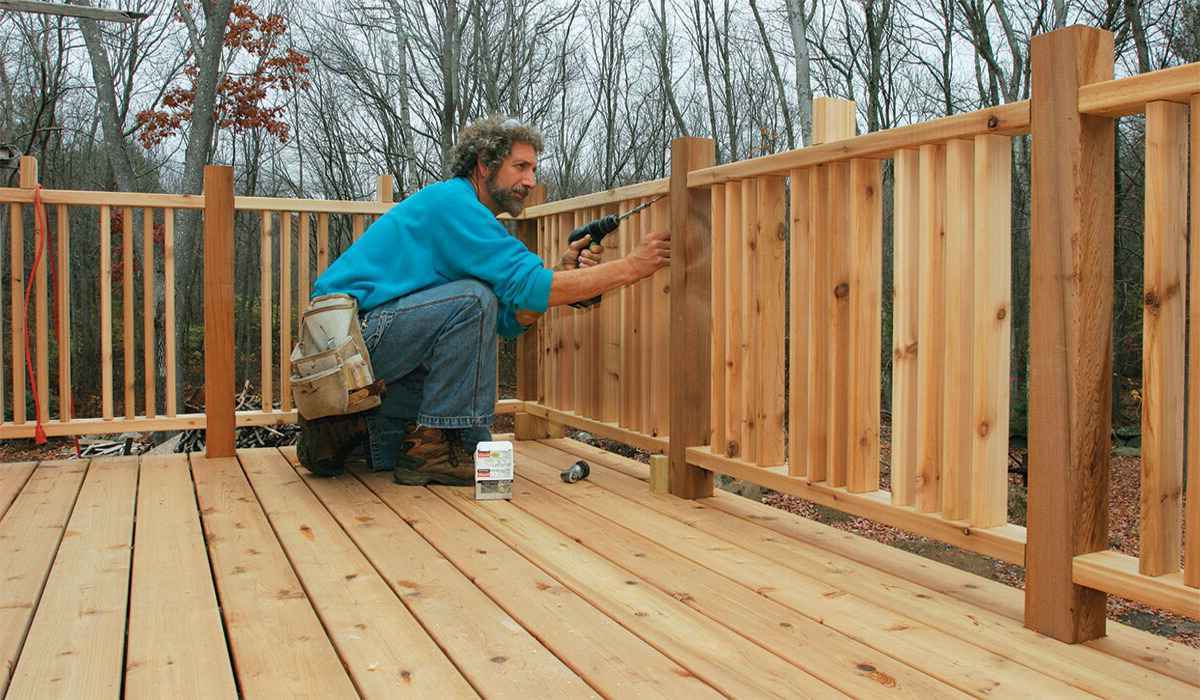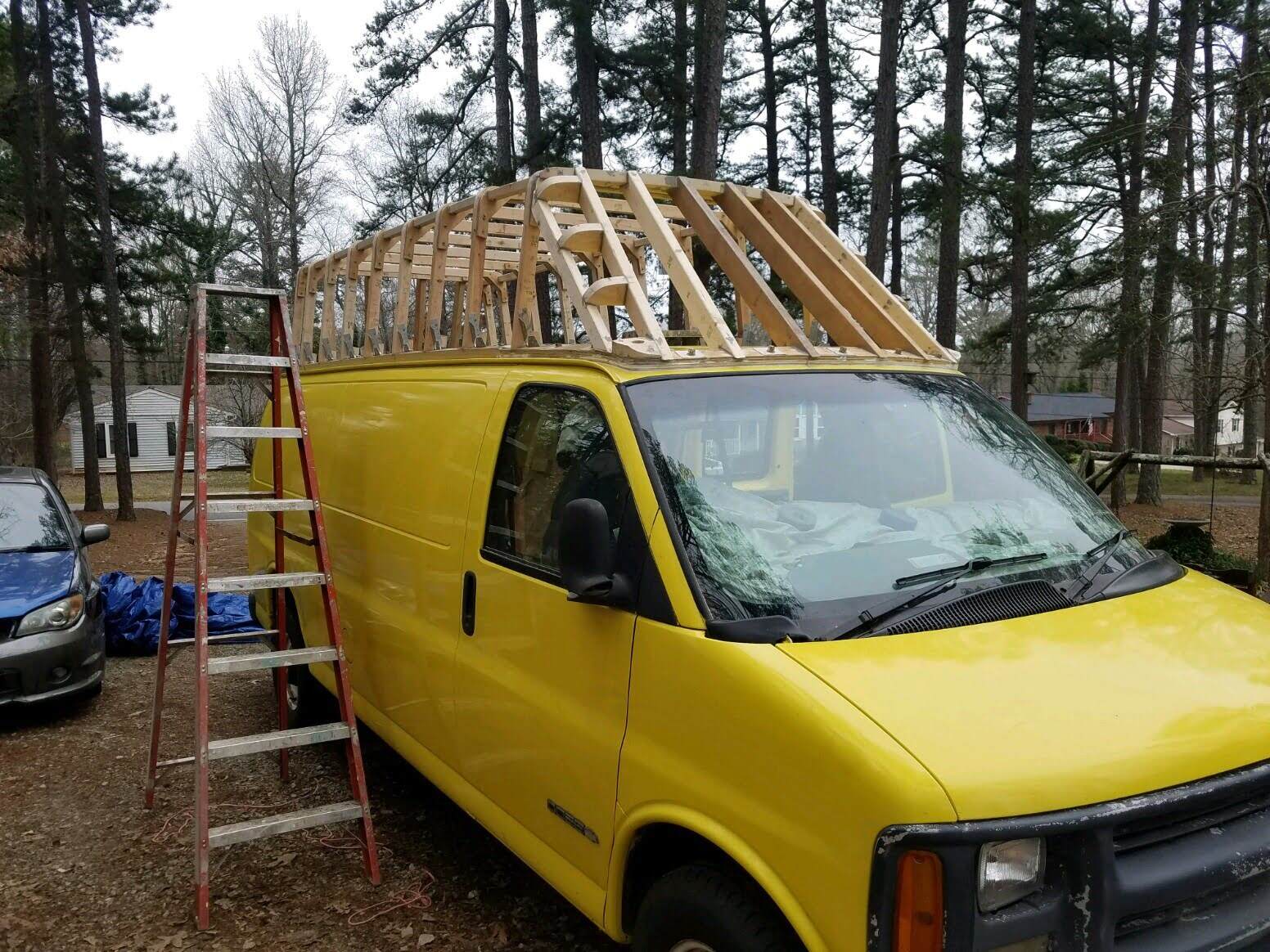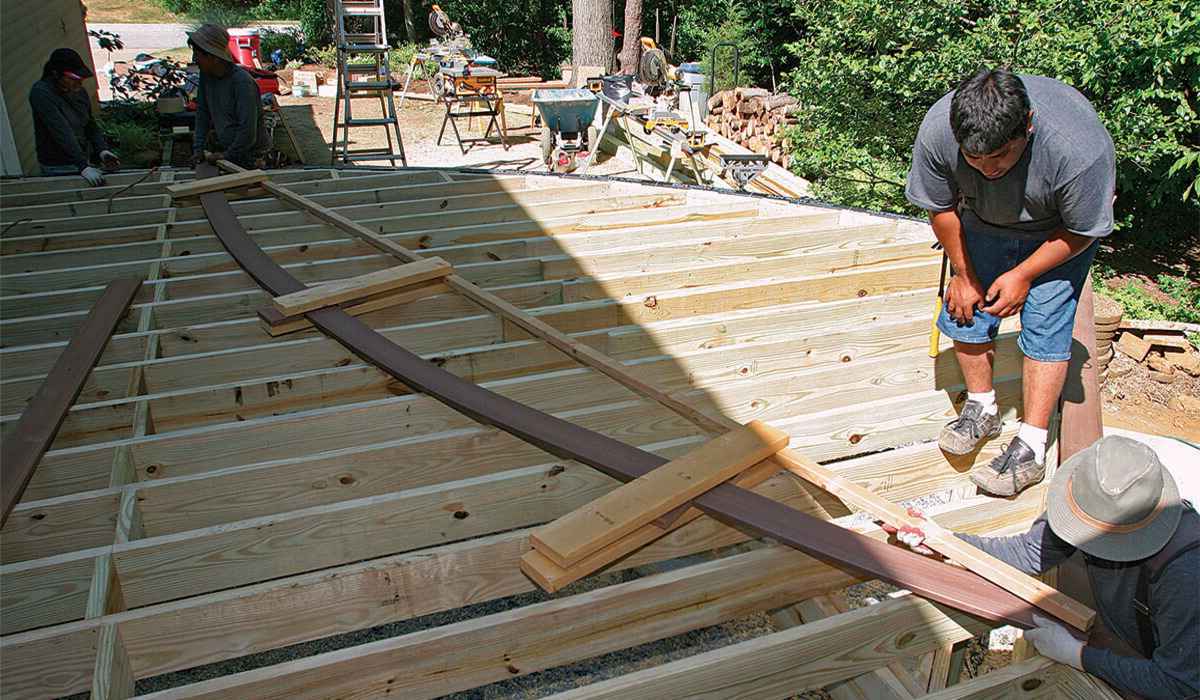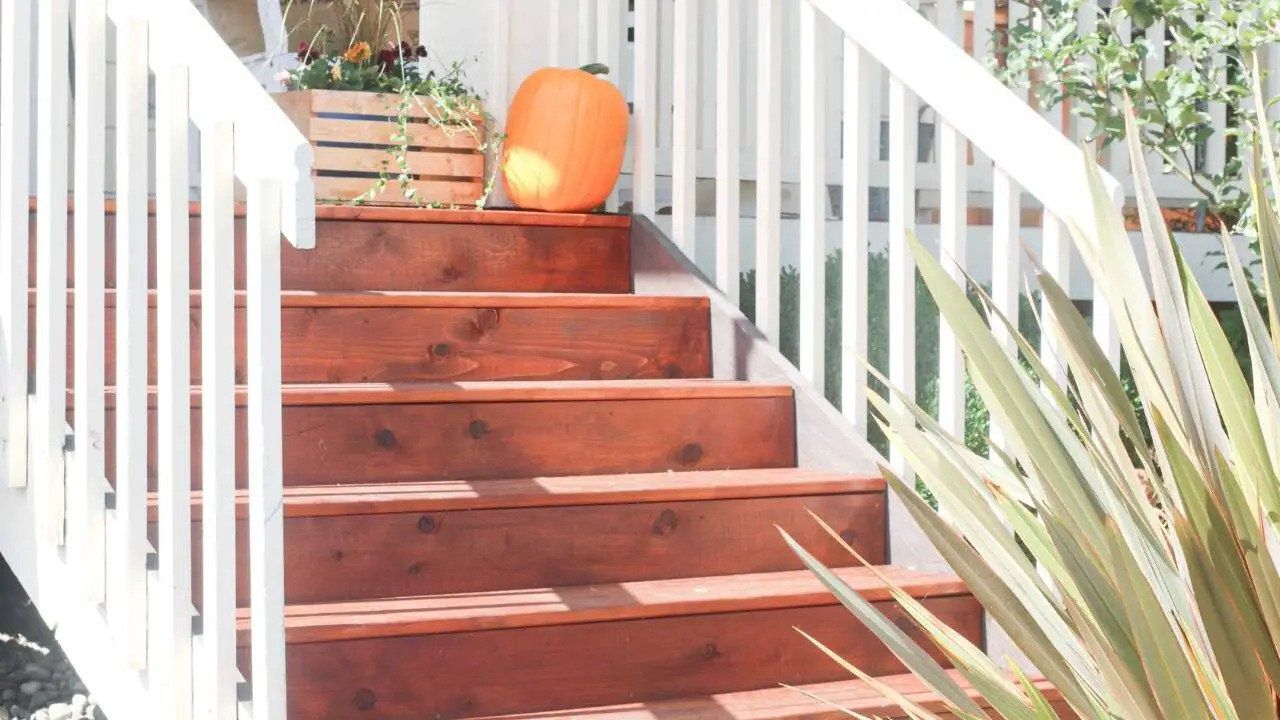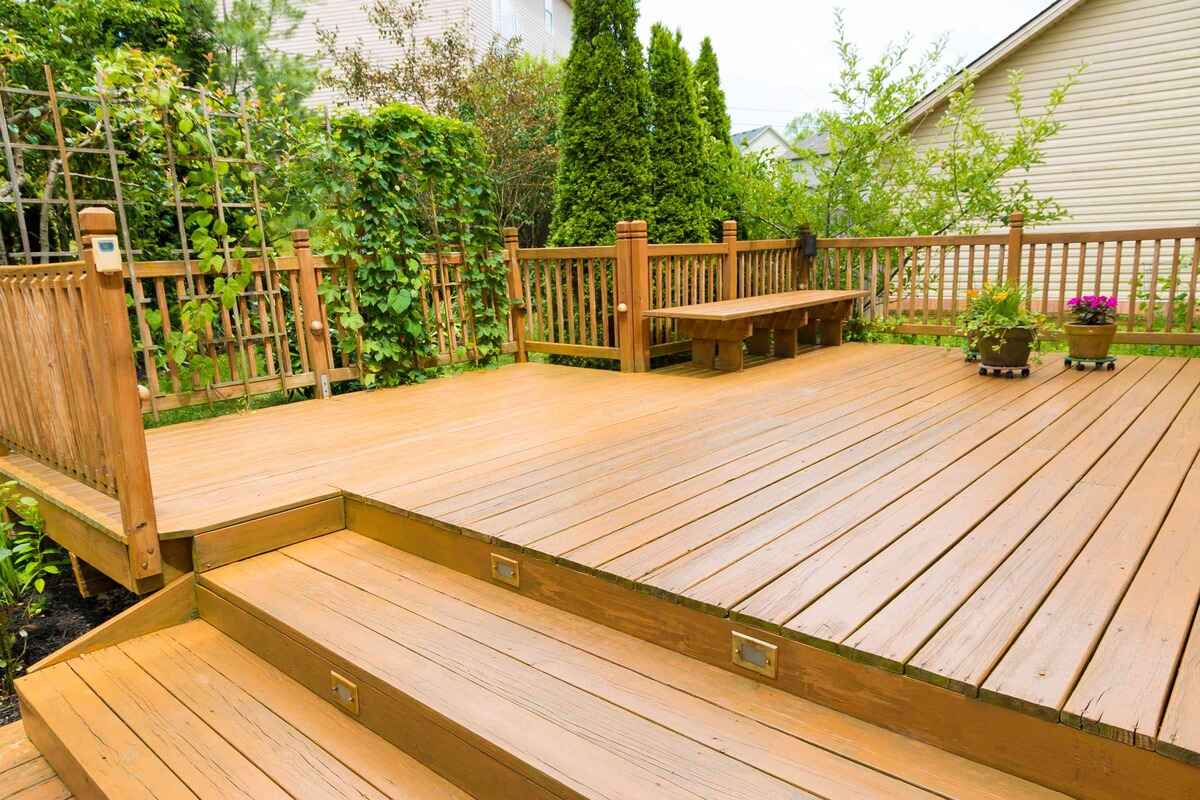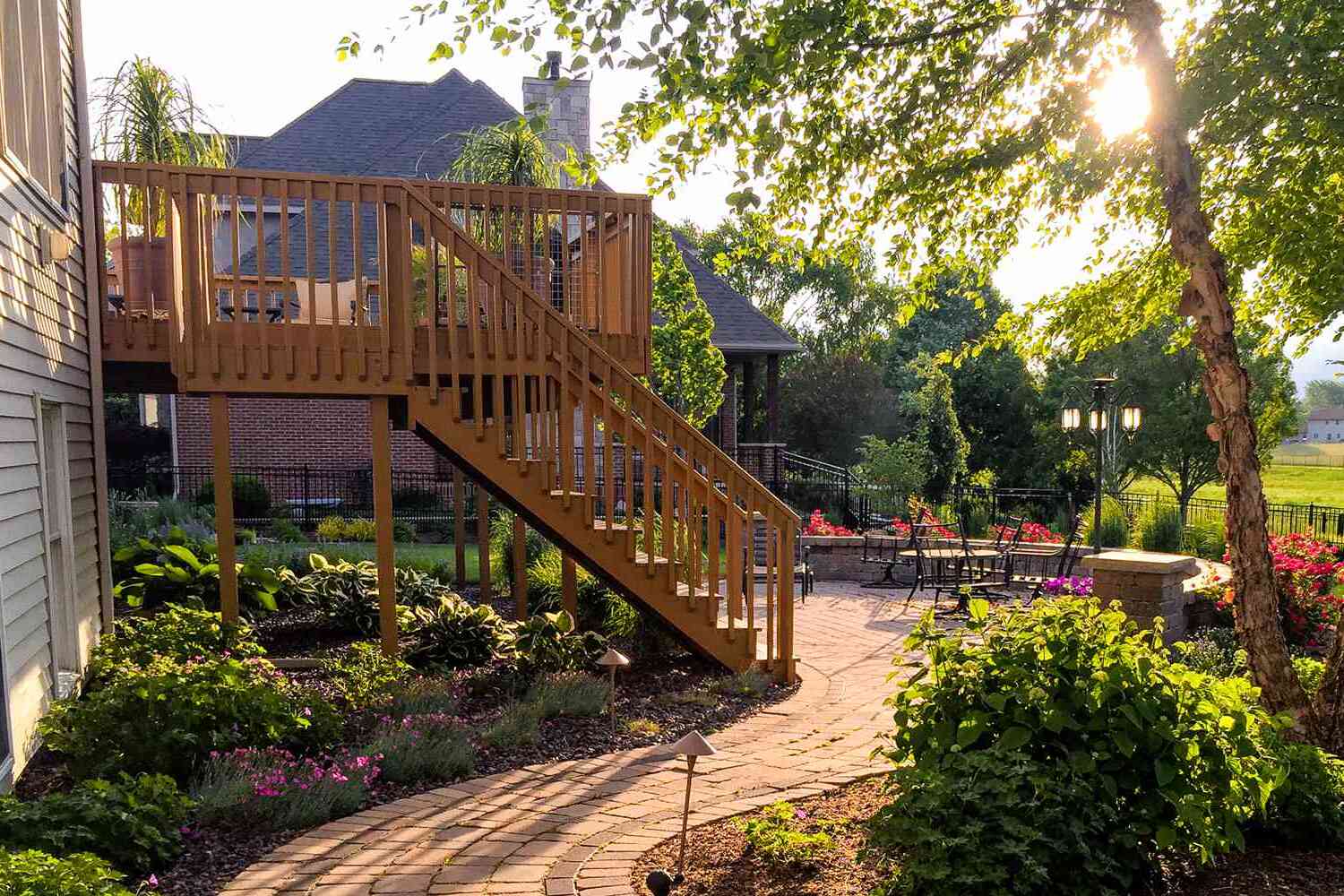Home>Create & Decorate>DIY & Crafts>How To Build A Deck For A Mobile Home
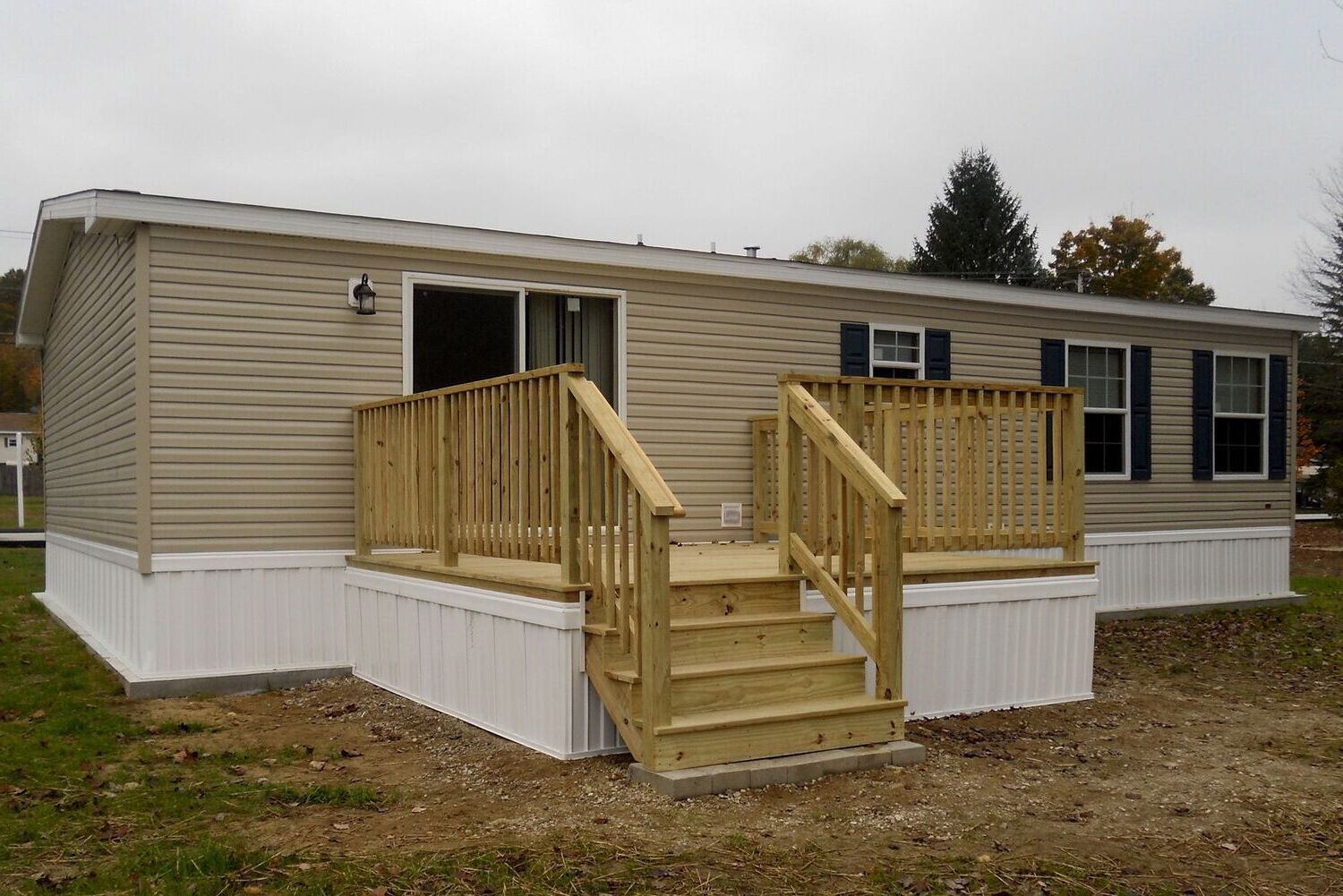

DIY & Crafts
How To Build A Deck For A Mobile Home
Published: February 28, 2024

Content Creator specializing in woodworking and interior transformations. Caegan's guides motivate readers to undertake their own projects, while his custom furniture adds a personal touch.
Learn how to build a deck for a mobile home with our step-by-step DIY guide. Get creative with DIY & Crafts and enhance your outdoor living space!
(Many of the links in this article redirect to a specific reviewed product. Your purchase of these products through affiliate links helps to generate commission for Twigandthistle.com, at no extra cost. Learn more)
Introduction
Building a deck for a mobile home can be an exciting and rewarding DIY project that adds both functionality and aesthetic appeal to your property. Whether you envision a cozy space for outdoor relaxation or a platform for entertaining guests, a well-designed deck can significantly enhance the overall value and enjoyment of your mobile home.
In this comprehensive guide, we will walk you through the essential steps and considerations involved in constructing a sturdy and visually appealing deck for your mobile home. From initial planning and obtaining permits to selecting the right materials and executing the construction process, we will provide you with valuable insights and practical tips to ensure a successful and satisfying outcome.
By the end of this guide, you will have a clear understanding of the key factors to consider when embarking on this project, empowering you to make informed decisions and navigate the construction process with confidence. Whether you are a seasoned DIY enthusiast or a novice homeowner eager to take on a new challenge, this guide will equip you with the knowledge and inspiration needed to bring your vision of a beautiful and functional deck for your mobile home to life.
Read more: How To Build Steps For A Mobile Home
Planning and Preparation
Before diving into the construction of a deck for your mobile home, thorough planning and meticulous preparation are crucial to ensure a smooth and successful project. This phase sets the foundation for the entire endeavor, allowing you to clarify your vision, assess the practical requirements, and make informed decisions. Here's a detailed breakdown of the essential steps involved in the planning and preparation stage:
-
Assessing Your Needs and Vision: Begin by envisioning the purpose and design of your deck. Consider how you intend to use the space – whether for outdoor dining, relaxation, or social gatherings. This initial step helps you define the size, layout, and features you want to incorporate into the deck, aligning the project with your specific needs and preferences.
-
Evaluating the Site: Carefully evaluate the location where the deck will be constructed. Take note of any existing structures, landscaping features, and potential obstacles. Consider factors such as sunlight exposure, privacy, and accessibility to ensure that the chosen site aligns with your vision for the deck.
-
Setting a Realistic Budget: Establish a clear budget for the project, factoring in the costs of materials, tools, labor (if applicable), and any additional expenses such as permits and inspections. Having a realistic budget in place allows you to make informed decisions when selecting materials and planning the construction process.
-
Researching Building Codes and Regulations: Familiarize yourself with the local building codes and regulations pertaining to deck construction for mobile homes. This step is crucial, as it ensures compliance with safety standards and legal requirements. Be sure to check for any specific guidelines related to mobile home decks, including setback requirements and load-bearing considerations.
-
Creating a Detailed Plan: Develop a detailed plan or sketch that outlines the layout, dimensions, and features of the deck. This plan serves as a visual reference and a valuable communication tool, enabling you to convey your vision to potential contractors, obtain accurate cost estimates, and stay organized throughout the construction process.
-
Gathering Necessary Permits and Approvals: Determine the permits and approvals required for the construction of the deck. Contact the local building department to inquire about the specific documentation needed to proceed with the project. Securing the necessary permits in advance helps prevent delays and ensures that the construction process adheres to legal requirements.
By diligently addressing these crucial aspects during the planning and preparation stage, you set the stage for a well-executed and successful deck construction project. This thoughtful approach allows you to lay the groundwork for a structurally sound and visually appealing addition to your mobile home, tailored to your unique preferences and lifestyle.
Obtaining Permits and Regulations
Obtaining the necessary permits and adhering to relevant regulations are critical steps in the process of building a deck for a mobile home. Failure to comply with local building codes and regulations can result in costly fines, delays, or even the need to dismantle and reconstruct the deck to meet legal requirements. Therefore, it is imperative to approach this aspect of the project with thoroughness and attention to detail.
The specific permits and regulations governing deck construction can vary significantly depending on your location. It is essential to contact the local building department or relevant authorities to obtain a clear understanding of the requirements applicable to your area. In many cases, there are specific guidelines and regulations tailored to decks attached to mobile homes, considering the unique structural characteristics and mobility of these dwellings.
When applying for permits, you may be required to submit detailed plans and specifications for the proposed deck, along with information about the materials to be used and the intended method of construction. The authorities responsible for issuing permits will review these documents to ensure that the proposed deck complies with safety standards, zoning regulations, and any other relevant provisions.
In addition to obtaining permits, it is crucial to consider any regulations specific to mobile home communities or parks. Some mobile home parks may have their own set of guidelines governing the construction of decks, including restrictions on size, height, and aesthetic features. It is advisable to consult with the management or governing body of the mobile home community to ensure that your planned deck aligns with their regulations and architectural standards.
By proactively addressing the permit and regulatory requirements, you demonstrate a commitment to responsible and compliant construction practices. This approach not only safeguards you from potential legal repercussions but also contributes to the overall safety and structural integrity of the deck. Furthermore, obtaining the necessary permits and adhering to regulations instills confidence in the quality and legitimacy of the construction, which can be advantageous in the event of property inspections or future real estate transactions.
In summary, obtaining permits and adhering to regulations is a fundamental aspect of building a deck for a mobile home. By diligently navigating the permit application process and ensuring compliance with relevant regulations, you pave the way for a smooth and legally sound construction project, setting the stage for a safe, functional, and aesthetically pleasing addition to your mobile home.
Choosing the Right Materials
Selecting the appropriate materials for your mobile home deck is a pivotal decision that significantly influences the durability, aesthetics, and maintenance requirements of the structure. By carefully considering the following factors, you can make informed choices that align with your vision and long-term expectations for the deck.
Durability and Weather Resistance
Opt for materials renowned for their resilience in diverse weather conditions. Pressure-treated lumber, composite decking, and PVC (polyvinyl chloride) are popular choices due to their resistance to rot, decay, and insect damage. These materials are engineered to withstand the rigors of outdoor exposure, making them ideal for mobile home decks that are subject to varying climatic conditions.
Maintenance Requirements
Consider the level of maintenance you are willing to commit to. While natural wood exudes a timeless charm, it typically demands regular staining, sealing, and upkeep to preserve its appearance and structural integrity. Alternatively, composite decking and PVC offer low-maintenance solutions, requiring minimal upkeep beyond routine cleaning. Assessing your maintenance preferences can guide you toward materials that align with your lifestyle and long-term convenience.
Aesthetic Appeal
The visual impact of the deck is a crucial aspect of its overall appeal. Whether you prefer the warm, organic allure of natural wood or the contemporary elegance of composite materials, prioritize aesthetics that harmonize with the architectural style of your mobile home. Additionally, consider how the chosen materials complement the surrounding landscape and contribute to a cohesive outdoor living space.
Budget Considerations
Evaluate the cost of materials and installation against your predetermined budget. While natural wood may offer a traditional and inviting ambiance, composite decking and PVC, despite their initial higher cost, present long-term savings through reduced maintenance expenses and prolonged lifespan. Balancing the upfront investment with the anticipated long-term benefits can guide you toward a cost-effective and sustainable choice.
Environmental Impact
If environmental sustainability is a priority, explore eco-friendly material options. Some composite decking products incorporate recycled materials, reducing the demand for virgin resources and promoting eco-conscious construction practices. Additionally, certain wood species, such as cedar or redwood, are renowned for their natural resistance to decay, minimizing the need for chemical treatments and supporting environmentally responsible building practices.
By carefully weighing these considerations, you can make informed decisions when selecting materials for your mobile home deck. Whether prioritizing durability, aesthetics, maintenance, budget, or environmental impact, the right materials will lay the foundation for a resilient, visually captivating, and sustainable outdoor living space tailored to your unique preferences and lifestyle.
Designing the Deck
Designing the deck for your mobile home is a pivotal phase that allows you to translate your vision into a tangible blueprint, encompassing the layout, features, and aesthetic elements of the outdoor living space. This creative process involves thoughtful consideration of various factors to ensure that the design aligns with your lifestyle, complements the architectural style of your mobile home, and maximizes the functionality and visual appeal of the deck.
Begin by envisioning how you intend to utilize the deck. Whether it's a space for alfresco dining, relaxation, or social gatherings, clarifying the primary purpose of the deck sets the foundation for the design process. Consider the desired seating arrangements, potential amenities such as built-in planters or storage benches, and any specific features that cater to your outdoor lifestyle.
Evaluate the available space and the layout of your mobile home to determine the most suitable location and dimensions for the deck. Take into account factors such as sunlight exposure, privacy considerations, and convenient access from the interior of the home. Additionally, assess the integration of the deck with existing landscaping features, ensuring a harmonious and seamless transition between the outdoor and indoor living areas.
Incorporate design elements that reflect the architectural character of your mobile home. Whether it's embracing a contemporary, minimalist aesthetic or embracing a rustic, natural ambiance, the design of the deck should harmonize with the overall style of the property. Consider the use of complementary colors, textures, and materials to create a cohesive visual narrative that enhances the curb appeal of your mobile home.
Explore creative features that elevate the functionality and allure of the deck. This may include the addition of built-in seating, pergolas or shade structures, integrated lighting for evening ambiance, or versatile storage solutions. By infusing the design with thoughtful details and practical amenities, you can optimize the usability of the deck while infusing it with personality and charm.
Utilize visual aids such as sketches, renderings, or digital design tools to materialize your design concepts. These visual representations serve as valuable communication tools, allowing you to convey your vision to contractors, material suppliers, and other stakeholders involved in the construction process. Additionally, they provide a platform for refining and fine-tuning the design before initiating the construction phase.
By approaching the design process with creativity, practicality, and attention to detail, you can craft a deck that seamlessly integrates with your mobile home, reflects your personal style, and enriches your outdoor living experience. The design phase serves as a canvas for realizing your aspirations for the deck, setting the stage for a construction process that brings your vision to life.
Building the Foundation
The foundation of a deck serves as the anchor that supports the entire structure, providing stability, load-bearing capacity, and resistance to shifting or settling. Building a solid foundation is essential for ensuring the long-term structural integrity and safety of the deck. The following steps outline the process of constructing a robust foundation for a mobile home deck:
-
Site Preparation: Begin by clearing and leveling the area where the deck will be situated. Remove any vegetation, rocks, or debris, and ensure that the ground is compacted and free from obstructions. This preparatory step creates a stable base for the foundation and facilitates accurate measurements and construction.
-
Marking the Layout: Use stakes and string to outline the perimeter of the deck, marking the precise dimensions and configuration of the foundation. This visual guide helps maintain alignment and ensures that the foundation is constructed according to the intended design and specifications.
-
Digging Footings: Excavate holes for the footings, which are concrete structures that support the vertical posts of the deck. The depth and diameter of the footings should comply with local building codes and regulations, considering factors such as soil composition and frost depth. It is crucial to achieve a stable and level footing base to uphold the structural stability of the deck.
-
Installing Post Anchors: Secure post anchors in the footings to provide a stable connection point for the vertical support posts. These anchors are typically made of galvanized steel and are designed to resist corrosion and ensure a secure attachment between the posts and the footings.
-
Setting Support Posts: Position the support posts in the post anchors, ensuring that they are plumb and securely fastened. The posts serve as the primary vertical supports for the deck, bearing the weight of the structure and distributing it evenly to the footings.
-
Attaching Beams and Joists: Install beams and joists to form the framework of the deck, connecting them to the support posts to create a sturdy and level base. Proper spacing and alignment of the beams and joists are crucial for ensuring the structural integrity and load-bearing capacity of the deck.
-
Securing Ledger Board (if applicable): If the deck is attached to the mobile home, a ledger board is installed to create a secure connection between the deck and the home's structure. The ledger board must be properly flashed and attached according to industry best practices and local building codes.
By meticulously executing these foundational steps, you establish a solid base for the deck, laying the groundwork for the subsequent phases of construction. A well-built foundation forms the cornerstone of a structurally sound and enduring deck, providing a reliable platform for the installation of decking materials, railings, and finishing touches.
Constructing the Frame
Constructing the frame of a mobile home deck is a pivotal phase that sets the stage for the overall structural integrity and stability of the outdoor living space. The frame serves as the skeletal framework that supports the decking, facilitates load distribution, and ensures the resilience of the entire structure. This essential phase involves precise measurements, meticulous assembly, and adherence to industry best practices to create a robust and durable foundation for the deck.
Key Steps in Frame Construction
-
Laying Out the Joists: Begin by positioning and securing the joists, which are horizontal framing members that form the primary framework of the deck. Proper spacing and alignment of the joists are crucial for distributing the weight of the decking materials and accommodating the anticipated load-bearing requirements. Careful attention to detail during this phase is essential to ensure a level and structurally sound foundation for the deck.
-
Securing Rim Joists: Install rim joists, which are perimeter framing members that enclose the outer edges of the deck. These components provide lateral support, enhance the rigidity of the frame, and contribute to the overall stability of the structure. Ensuring secure attachment and alignment of the rim joists is imperative for maintaining the structural integrity of the deck.
-
Adding Support Bracing: Incorporate diagonal bracing or blocking between the joists to reinforce the frame and minimize lateral movement. This additional support enhances the stability of the deck, mitigates the risk of structural shifting, and contributes to a solid and resilient framework. Strategic placement of bracing elements is instrumental in fortifying the overall structure against potential stress and movement.
-
Verifying Levelness and Alignment: Regularly assess the levelness and alignment of the frame components throughout the construction process. Utilize spirit levels, string lines, and other precision tools to ensure that the frame is uniformly level and square, minimizing the risk of uneven weight distribution and structural discrepancies. Attention to these details is essential for achieving a stable and visually appealing deck foundation.
-
Implementing Industry Standards: Adhere to industry-recognized construction standards and best practices when assembling the frame. This includes utilizing corrosion-resistant fasteners, selecting appropriate framing materials, and following established guidelines for joist spacing and attachment methods. Compliance with industry standards ensures the structural integrity and longevity of the deck frame, safeguarding it against premature deterioration and performance issues.
By meticulously executing these key steps, you establish a sturdy and reliable frame for the mobile home deck, laying the groundwork for the subsequent phases of construction. The frame serves as the backbone of the deck, providing the essential support and structural framework for the installation of decking materials, railings, and other finishing elements. A well-constructed frame is instrumental in ensuring the long-term durability, safety, and aesthetic appeal of the deck, reflecting a commitment to quality craftsmanship and meticulous attention to detail.
Installing the Decking
The installation of decking marks a significant phase in the construction of a mobile home deck, where the vision and planning begin to materialize into a tangible outdoor living space. This crucial step involves the meticulous placement of decking materials to create a functional, visually appealing, and enduring platform for outdoor activities and relaxation.
Key Considerations for Decking Installation
Material Selection
Carefully select the decking material that aligns with your aesthetic preferences, maintenance requirements, and durability expectations. Whether opting for natural wood, composite decking, or PVC, ensure that the chosen material complements the overall design of the deck and offers the desired level of weather resistance and longevity.
Proper Ventilation
Incorporate adequate ventilation measures beneath the decking to promote air circulation and mitigate moisture-related issues. This is particularly crucial for decks attached to mobile homes, as proper ventilation helps prevent moisture buildup and potential damage to the underlying structure.
Alignment and Fastening
Precisely align and secure the decking boards to the frame, ensuring uniform spacing and a level surface. Utilize appropriate fasteners, such as corrosion-resistant screws or hidden fastening systems, to securely attach the decking while maintaining a clean and polished appearance.
End-to-End Board Placement
When installing decking boards, consider the end-to-end placement to minimize waste and achieve a seamless visual continuity. Careful planning and measurement can optimize the utilization of materials and create a cohesive, uninterrupted surface that enhances the overall aesthetic appeal of the deck.
Surface Finishing
Upon completing the installation of decking boards, consider surface finishing options to enhance durability and visual appeal. This may involve applying protective sealants, stains, or specialized coatings designed to safeguard the decking against weathering, UV exposure, and wear, while accentuating the natural beauty of the material.
Execution and Precision
Execute the installation with precision, paying attention to detail and ensuring consistent alignment, spacing, and fastening of the decking materials. A meticulous approach to installation contributes to the structural integrity, safety, and visual allure of the deck, reflecting a commitment to quality craftsmanship and attention to detail.
By meticulously addressing these considerations and executing the installation with precision, you transform the conceptual design of the deck into a tangible and inviting outdoor living space. The installation of decking represents a pivotal stage in the construction process, bringing you closer to the realization of your vision for a functional, aesthetically pleasing, and enduring extension of your mobile home.
Adding Finishing Touches
As the construction of the mobile home deck nears completion, the addition of finishing touches plays a pivotal role in enhancing the functionality, aesthetics, and overall appeal of the outdoor living space. This phase allows for the infusion of personalized details, practical amenities, and decorative elements that elevate the deck's ambiance and usability.
Read more: How to Build a Rooftop Deck
Railing and Balustrades
Incorporating sturdy and visually appealing railings or balustrades contributes to the safety and visual coherence of the deck. Whether opting for traditional wooden railings, sleek metal balustrades, or low-maintenance composite materials, the selection should align with the overall design theme and safety requirements. Additionally, the installation of handrails provides added support and security, particularly for elevated or multi-level decks.
Lighting Solutions
Strategically integrating lighting solutions enhances the deck's usability and creates an inviting ambiance for evening gatherings or relaxation. Options such as low-voltage LED deck lights, solar-powered pathway lighting, or decorative string lights can illuminate the space while accentuating architectural features and creating a warm, welcoming atmosphere. Thoughtful placement of lighting fixtures ensures both functionality and visual allure.
Seating and Furnishings
Incorporating comfortable seating options, such as weather-resistant outdoor furniture, benches, or built-in seating, transforms the deck into a versatile and inviting social space. Consider the arrangement of seating to optimize views, facilitate conversation, and create distinct zones for dining, lounging, and entertainment. The selection of furnishings should align with the overall design aesthetic and cater to the intended use of the deck.
Greenery and Planters
Integrating greenery through potted plants, planter boxes, or vertical gardens infuses the deck with natural beauty and a sense of tranquility. Selecting resilient and low-maintenance plant varieties ensures that the greenery enhances the ambiance without demanding excessive upkeep. The strategic placement of planters and greenery contributes to a harmonious integration of the deck with the surrounding landscape.
Read more: How To Build A Curved Deck
Personalized Accents
Adding personalized accents, such as decorative outdoor rugs, throw pillows, or weather-resistant artwork, infuses the deck with character and reflects the homeowner's individual style. These thoughtful details contribute to a welcoming and personalized outdoor retreat, creating a space that resonates with the homeowner's unique preferences and lifestyle.
By attending to these finishing touches, the mobile home deck transcends functionality to become a captivating and inviting extension of the living space. Each detail contributes to the overall ambiance, comfort, and visual appeal of the deck, culminating in a thoughtfully curated outdoor environment that enriches the homeowner's daily life and leisure experiences.
Conclusion
In conclusion, the construction of a deck for a mobile home is a rewarding endeavor that combines practical functionality with aesthetic enhancement. Through meticulous planning, adherence to building regulations, and thoughtful material selection, homeowners can create a versatile outdoor living space that complements their lifestyle and adds value to their property.
The process begins with thorough planning and preparation, where the homeowner envisions the purpose and design of the deck, evaluates the site, and sets a realistic budget. Obtaining the necessary permits and approvals, along with researching building codes and regulations, ensures that the construction process aligns with legal requirements and safety standards.
Choosing the right materials is a critical decision that influences the deck's durability, maintenance requirements, and visual appeal. By considering factors such as weather resistance, maintenance needs, budget, and environmental impact, homeowners can select materials that align with their preferences and long-term expectations.
The design phase allows for the creative expression of the homeowner's vision, integrating practical features and aesthetic elements that harmonize with the mobile home's architectural style. Building a solid foundation and constructing a sturdy frame form the structural backbone of the deck, laying the groundwork for the installation of decking materials and finishing touches.
The installation of decking, along with the addition of railing, lighting, seating, and personalized accents, transforms the deck into a welcoming and functional outdoor retreat. Each finishing touch contributes to the overall ambiance and usability of the space, reflecting the homeowner's individual style and preferences.
Ultimately, the completion of a well-designed and meticulously constructed deck for a mobile home enhances the property's appeal, expands the living space, and provides a versatile setting for relaxation, socializing, and outdoor enjoyment. By embracing the principles of thoughtful planning, quality craftsmanship, and attention to detail, homeowners can embark on a transformative journey to create a personalized and enduring outdoor oasis that enriches their daily lives.



